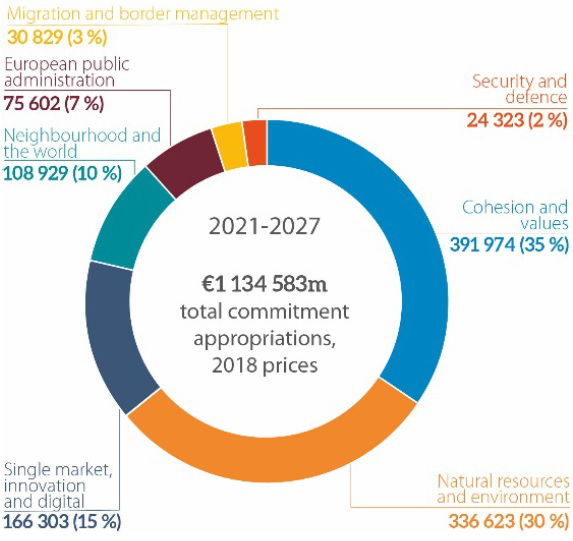The new EU budget for the 2021-2027 financial period presents some important innovations for the transport sector too. The document, published by the Commission last May, has meanwhile been subjected to analysis, in particular by the European Parliament (in-Depth analysis – July 2018 and Initial Appraisal of a European Commission Impact Assessment 2021-2027 MFF- November 2018).
For the transport sector, important changes are emerging, albeit in the context of the continuity of the Connecting Europe Facility, already established with the previous 2014-2020 programming.
The budget is clearly affected by the forthcoming exit of the United Kingdom from the European Union., To all intents and purposes, there is a slight decrease on the current budget, while if you compare a “virtual EU 27” also for the 2014-2020 current period and the budget proposal, valid for 27 countries, you in fact see an increase in resources provided. Brexit will not significantly effect the amount and the impact of the EU budget in the years to come.
The budget proposed by the Commission increases the areas of expenditure and, at the same time, reduces the number of programs. It increases the emphasis placed on border controls, security and research, while reducing the appropriations for Cohesion.
In this general context, the transport sector, which is known to be a shared competence between Member States and the European Union, has a budget of EUR 11.384bn allocated to CEF Transport, which is 8% less than the virtual EU-27 budget for 2014-2020 programming. The CEF, on the other hand, benefits from substantial increases in the energy (+ 83%) and digitisation (+166%) parts.
Bad news also for the allocation of Cohesion funds for transport, although they are not intended for Italy. They will decrease from 11.4 to 10 billion, corresponding to a 13% cut . In this context, there is a considerable allocation for mobility for defense, amounting to 5.7 billion, intended to improve transport interconnections between member countries for military purposes. These funds in the previous budget were not foreseen and concern investments for transport nodes and infrastructures aimed at increasing their capacity and efficiency, however.
In conclusion, maintaining the CEF ensures a certain continuity with the current programming, which has been modified to a lesser extent than the proposed changes for energy and digitization. The reduction in funding will nevertheless have an impact on the attractiveness of the program, bearing in mind that, in general, the European contribution to the completion of large infrastructure projects is rather small.
For more information click here

